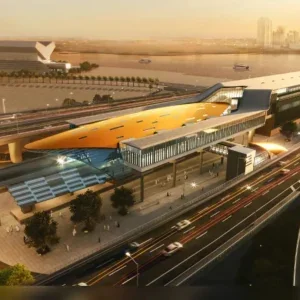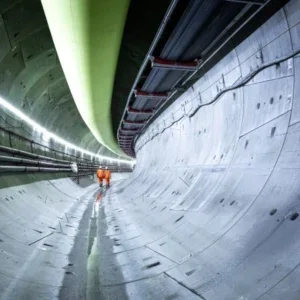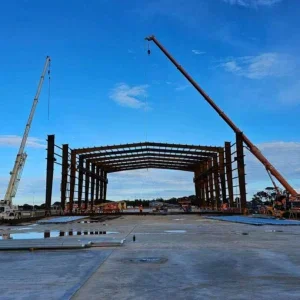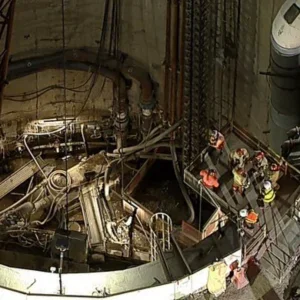The total length of Lot 1 of the Santiago Metro Line 7 project in Chile is approximately 7.9km, in which 6.7km needs to be excavated by TBM. The project undercrosses the Mapocho River, with a length of 60 m, and the bottom of the river is about 10m from the tunnel roof. The tunnel in the project lot mainly crosses through fine-grained soil, silt, clay, sand, gravel, pumice formation, and volcanic rock formation (granodiorite). The minimum turning radius of the alignment is 250m, which requires a high turning capacity of the TBM.

Based on the geological features of this project, the R&D team of CRCHI has equipped multiple independent key technologies for the TBM. The cutterhead adopts a composite design of 6 spokes and 6 panels, with a central support. Disc cutters, drag bits, and gauge scrapers are dressed on the cutterhead for full-face excavation of the tunnel,and all detachable cutting tools can be replaced from the back of the cutterhead. The cutterhead is capable of bidirectional rotation for muck discharge. When the TBM needs to turn, the stroke difference of each group of propulsion cylinders is adjusted to meet the minimum turning demand of the alignment.
The Santiago Metro Line 7 in Chile has a total length of 26 km and a construction period of 6 years, making it a key project of the Chilean government in recent years. The line passes through 7 urban areas in the capital, with plans to build 7 island style stations and construction shafts. After the completion of the project, the entire line will only operate in 43 minutes, which can shorten the commuting time between the two terminal stations by 54% and provide fast and convenient transportation services for over 1.36 million residents.







